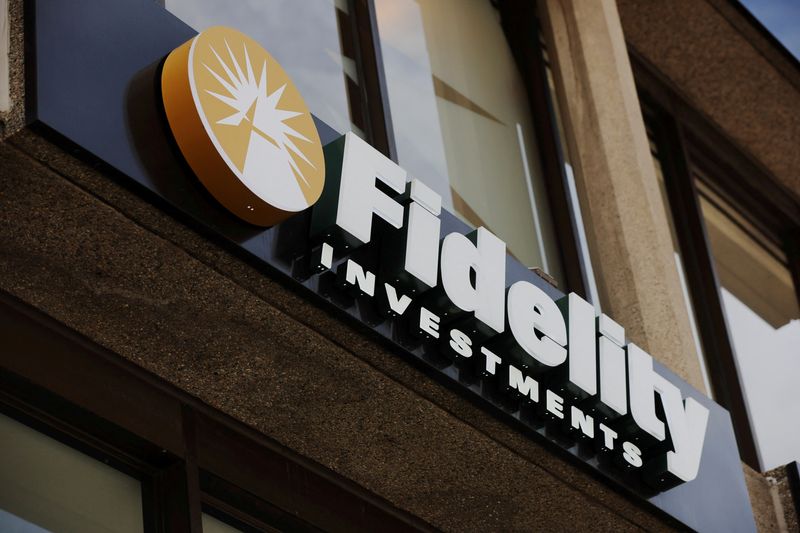How to save for an emergency, with help from your employer
2024.01.03 06:54

© Reuters. FILE PHOTO: A sign marks a Fidelity Investments office in Boston, Massachusetts, U.S., April 28, 2022. REUTERS/Brian Snyder/File Photo
By Chris Taylor
NEW YORK (Reuters) – Loretta Day was facing a financial emergency.
The Delta Air Lines (NYSE:) flight attendant’s daughter was moving apartments and needed quick cash for a deposit – but did not have enough in savings.
In the old days, the Atlanta resident might have put it all on credit cards at high interest rates. But this time, Day had an emergency savings plan set up at her workplace by money managers Fidelity Investments.
Day transferred $850, her daughter moved into her new apartment – and she immediately started building those emergency savings back up, with $50 from each paycheck, along with some additional matching funds from Delta.
“I didn’t have to worry about how I was going to do this,” says Day, who originally started out at the airline as a baggage handler. “When my daughter needed me financially, I was there for her.”
The Fidelity initiative, called “Goal Booster,” is part of a wider and growing trend of workplace emergency savings programs – which can be used not only for unexpected expenses like medical bills or car repairs – but potentially for other near-term goals like saving up for a vacation or a down payment on a home.
Many of us, left to our own devices, do not have enough savings to cover times of crisis. Almost four in 10 Americans would not be able to come up with $400, according to the Federal Reserve’s Economic Well-Being of U.S. Households report.
But when emergency savings are addressed through the workplace – such as through small, regular paycheck deductions, and perhaps boosted with employer contributions – it is more likely that we will be successful.
“A few years ago, the idea of offering emergency savings through the workplace was not widespread at all,” says Jason Ewas, a policy manager for the Aspen Institute’s Financial Security Program. “But now there is definitely increased adoption, and momentum is building.”
Sometimes these emergency savings programs are tied to a company’s 401(k), so-called ‘in-plan’ accounts, such as that offered by delivery giant UPS. Or sometimes they are ‘out-of-plan’ savings accounts, increasingly offered as part of companies’ employee benefits menus, from providers like SecureSave or Sunny Day Fund.
Major employers who have rolled out the Fidelity program include Starbucks (NASDAQ:), with Whole Foods launching its own soon. Since integrating payroll deductions in September, Fidelity has signed up 10 large employers to roll out that option by the beginning of 2024, with another 20 projected by the end of the year.
“We start with a default goal of $1,000, which translates to around $20 a week,” says Emily Kolle, vice president of Fidelity’s Goal Booster program. “Employees can take the number down or take it up, but it’s an easy place to begin, since the idea of saving three to six months’ worth of expenses can seem daunting.”
The average account on the platform has about $1,000 in savings, Kolle says.
Meanwhile, SecureSave, co-founded by famed personal finance guru Suze Orman, has also made major strides. Currently, it works with 60 employers and 38,000 employees, at organizations like Humana (NYSE:) and the San Antonio Spurs.
Around 90% of its companies offer financial incentives to their employees for participating – such as signup bonuses, per-paycheck matches, or milestone awards for reaching certain savings thresholds.
WHY IT MAKES SENSE
The advantages of employee emergency savings are multiple: First, that they will not raid their own retirement accounts in times of crisis. As it stands, 2.4% of employees took hardship withdrawals from their 401(k)s in 2022, according to Fidelity – a record high, which could set back your retirement goals by years.
Another advantage of having emergency cash on hand is financial and emotional well-being. An employee who is overwhelmed with sudden expenses is stressed-out, distracted, less productive, and more prone to absenteeism – which harms not only the individual and their families, but the company as well.
One new factor that could supercharge emergency savings: The federal SECURE 2.0 Act. Beginning this year, it allows for automatic enrollment for in-plan programs (albeit with a cap of $2,500), which makes the process frictionless and could massively boost the number of savers out there. Currently out-of-plan programs are more widely available, since they do not require any link to an employer 401(k).
As for Delta’s Loretta Day, she has already been able to replace the money she took out for her daughter, and then some.
“I feel proud of myself, because in the event another emergency happens, guess what? I have money,” Day says.








